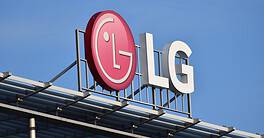The decision follows two years of testing and is amongthe first attemptsto use blockchain to clear a major asset class.
On December 7, the Australian Securities Exchange (ASX) announced that blockchain technology would replace its registry, settlement and clearing system. Using distributed ledger technology for the Clearing House Electronic Subregister System (CHESS) will result in lower infrastructure costs for back-office reconciliation and processing, along with streamlining the clearing process.
“It’s really the first attempt at trying to get blockchain to clear a major asset class,” says Larry Tabb, founder and research chairman of the US-based TABB Group.
Blockchain is a shared distributed ledger that records transactions and ensures information is shared and continuously reconciled. “The technology is such that the information that’s put in the distributed ledger or the blockchain can’t be altered or stolen,” says Joel Telpner, a partner in the finance practice at law firm Sullivan & Worcester. “It creates this immutable record in a way that’s superior to the type of records that are kept now on central servers that can be hacked.”
For stock sales, the external ledger lists every single transaction and the information is shared between different entities. Currently, the buyer, broker, exchange, clearing firm, custodian and clearing bank all have different views of the transaction that need to be reconciled.
A centralized ledger with accurate, accessible information helps to eliminate errors as multiple copies of the transaction do not need to be stored at different locations. Also, sales are recorded in real time, which minimizes inefficiencies with shareholder votes and dividend payments.
In a major asset class, however, getting everyone to adopt the same protocol can take time. “If you put it into the clearing house, then the clearing house can, in effect, drive adoption because the clearing house is the one place everyone connects to, and that’s the first place where the transactions need to be reconciled because clearing happens in two days,” says Tabb.
The decision follows two years of testing. A timetable for transitioning to the blockchain will be released for market feedback by the end of March 2018.



